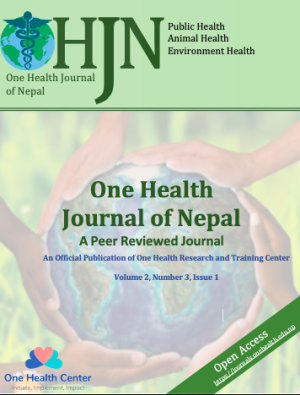Prevalence of Risk Factors of Cardiovascular Diseases among Government Employees of Hetauda Sub-Metropolitan City
DOI:
https://doi.org/10.3126/ohjn.v2i1.47449Keywords:
Cardiovascular Disease, Government Employees, Prevalence, Risk factorsAbstract
Introduction: The epidemiological transition in Nepal has increased the burden of non-communicable diseases which have resulted in lower production and longer disability. Thus, the aim of the study was to estimate the prevalence of risk factors of Cardiovascular Diseases (CVDs) among government employees of Hetauda Sub-Metropolitan City.
Methods: A cross-sectional descriptive study was conducted among 393 government employees of Hetauda sub metropolitan city. The ethical approval was taken from Nepal Health Research Council and informed consent was taken from each respondent before conducting the study. Cluster sampling was done where a modified WHO STEPS survey questionnaire was self-administered among the respondents. The collected data was entered and analyzed using SPSS Version 20.
Results: Out of 393 respondents, the prevalence of current smokers was 16.3%, more than two-third (72.9%) consumed alcohol in the past 30 days, and a vast majority did not consume both fruit and vegetables in adequate amounts. Similarly, more than two-third respondents (67.2%) never practiced any physical activity. The self-reported diabetes was found among 11.7% of participants whereas 19.4% had hypertension. Majority (70%) had normal BMI however; both male and female were found to be at risk for waist/hip ratio.
Conclusions: Almost every government employee was found to have one or more established risk factors of CVDs. This emphasizes the importance of taking quick action to avert the epidemic of cardiovascular disease.
Downloads
Downloads
Published
How to Cite
Issue
Section
License
Copyright (c) 2022 One Health Journal of Nepal

This work is licensed under a Creative Commons Attribution 4.0 International License.




